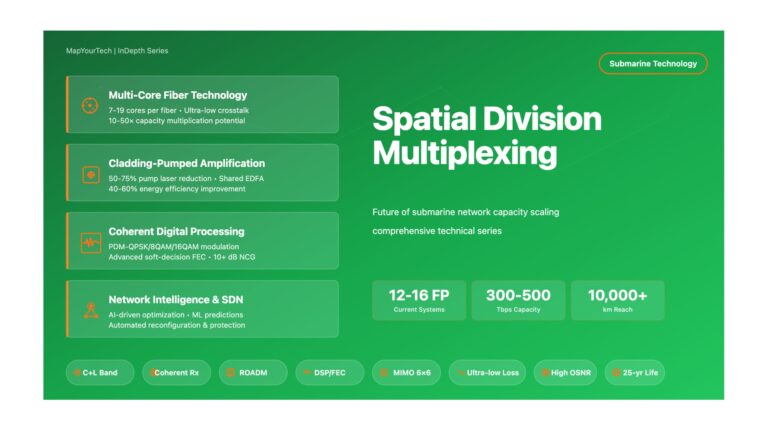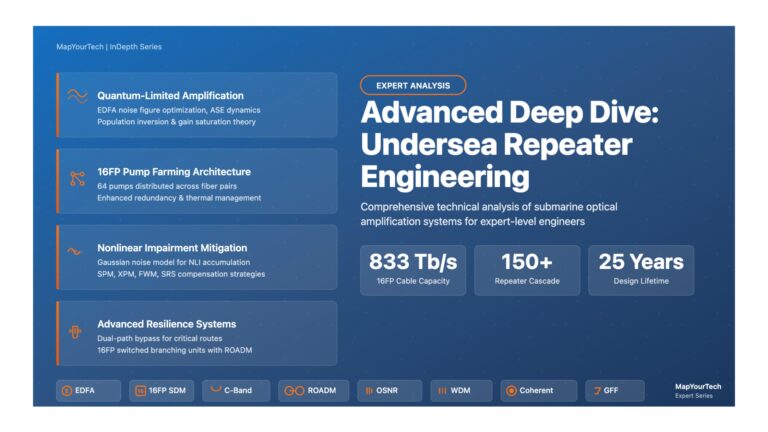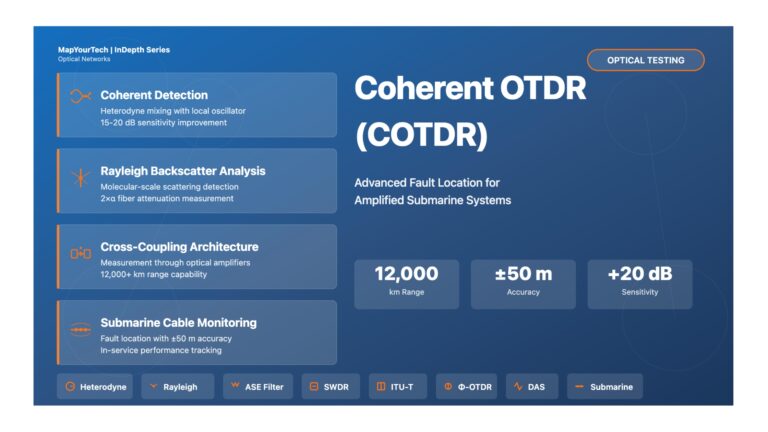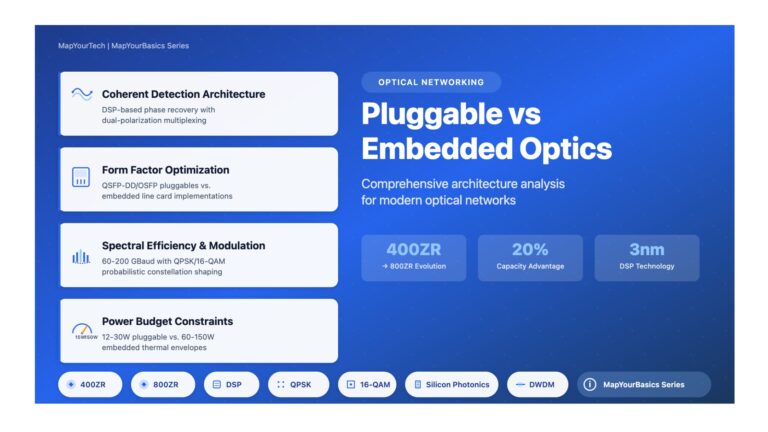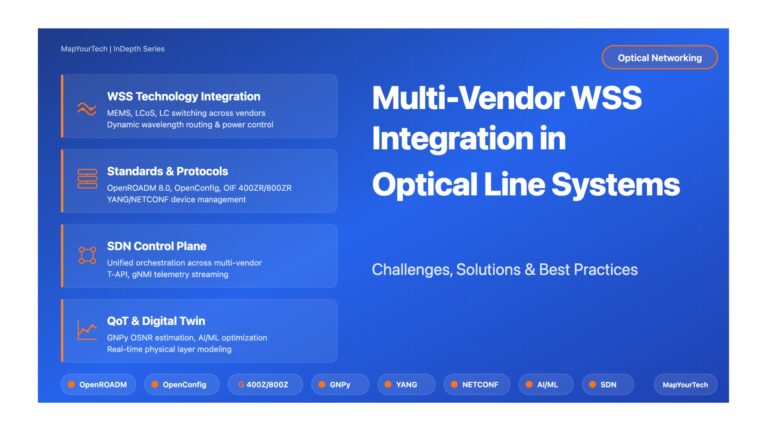Standards
Showing 21 - 30 of 271 results
Spatial Division Multiplexing: Future of Submarine Network Capacity Spatial Division Multiplexing: Future of Submarine Network Capacity Exploring the Next Generation...
-
Free
-
November 30, 2025
Submarine Line Terminal Equipment (SLTE) Submarine Line Terminal Equipment (SLTE):InDepth Foundation, Evolution & Core Concepts Submarine Optical Networks Introduction Submarine...
-
Free
-
November 30, 2025
Gain Equalizing Filters (GEF) – Comprehensive Visual Guide | MapYourTech Gain Equalizing Filters (GEF) Deep Dive Practical Information Based on...
-
Free
-
November 30, 2025
Advanced Deep Dive: Undersea Repeater Engineering Advanced Deep Dive: Undersea Repeater Engineering Comprehensive Technical Analysis of Submarine Optical Amplification Systems...
-
Free
-
November 29, 2025
Coherent Optical Time Domain Reflectometry (COTDR) – Comprehensive Visual Guide Coherent Optical Time Domain Reflectometry (COTDR) Technical Guide for Optical...
-
Free
-
November 29, 2025
Complete Guide: Shannon Capacity to OSNR and GOSNR – Part 1 From Shannon Capacity to OSNR and GOSNR: A Complete...
-
Free
-
November 20, 2025
Pluggable vs Embedded Optics: Which is Right for Your Network? | MapYourTech Pluggable vs Embedded Optics: Which is Right for...
-
Free
-
November 20, 2025
Multi-Vendor ROADM Interoperability – Part 1: Introduction & Architecture Multi-Vendor ROADM Interoperability in Optical Transport Networks Introduction The optical networking...
-
Free
-
November 16, 2025
Multi-Vendor Integration in Optical Networks: A Comprehensive Technical Analysis Multi-Vendor Automation in Optical Networks: A Comprehensive Technical Analysis Introduction The...
-
Free
-
November 15, 2025
Multi-Vendor WSS Integration in Optical Line Systems: Comprehensive Technical Guide Multi-Vendor WSS Integration in Optical Line Systems Comprehensive Technical Guide:...
-
Free
-
November 15, 2025
Explore Articles
Filter Articles
ResetExplore Courses
Tags
automation
ber
Chromatic Dispersion
coherent optical transmission
Data transmission
DWDM
edfa
EDFAs
Erbium-Doped Fiber Amplifiers
fec
Fiber optics
Fiber optic technology
Forward Error Correction
Latency
modulation
network automation
network management
Network performance
noise figure
optical
optical amplifiers
optical automation
Optical communication
Optical fiber
Optical network
optical network automation
optical networking
Optical networks
Optical performance
Optical signal-to-noise ratio
Optical transport network
OSNR
OTN
Q-factor
Raman Amplifier
SDH
Signal amplification
Signal integrity
Signal quality
Slider
submarine
submarine communication
submarine optical networking
Telecommunications
Ticker

